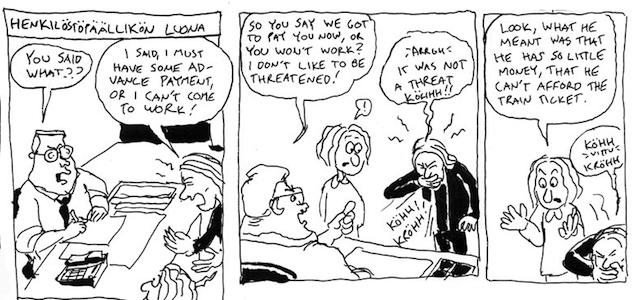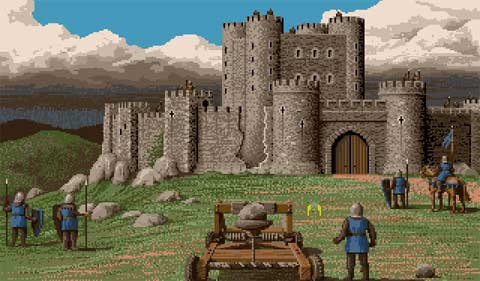Author's note: I want to personally thank the literally hundreds of people who replied to my call for stories from Amiga game developers, without whom this article would not have been possible. Unfortunately, it was not possible to include everyone's stories in the article, but I did make an honest attempt to reply to every email I received. If I missed you, I apologize.
Introduction
The Amiga was born a game machine, but it entered a world where the video game industry was well-established and changing rapidly. Long gone were the days where a lone coder would stay up all night in his basement for six weeks and bang out a hit for the Atari 2600. Even the younger and smaller computer game industry had moved far beyond Roberta Williams putting floppy disks into ziplock bags and answering phone calls from players in her kitchen. The success of the Commodore 64 (and on the other side of the pond, the Sinclair Spectrum) meant that more money was available for computer game development, and it was a good thing too, as the more powerful 16-bit machines were starting to seriously test the limits of a one-man development team.
For the first time, specialized careers were starting to emerge in game development. The Amiga's rich, 4096-color palette demanded people who were skilled artistically to create the sprites and backgrounds. The four-channel sampled sound chip cried out for musicians to make it sing. The larger size and complexity of the games required that someone other than the programmers be asked to test the games before they were released. Finally, new management positions were needed to oversee the work of these creative people.
Life in the trenches
Finding these people wasn't easy. In many cases it was a matter of people fresh out of their teens hiring their peers—people they knew from high school or from computer clubs. Some of the larger development firms, like Ocean, had a stable of in-house developers, but for most games the work was contracted out to a third-party team. These teams, often staffed with green developers, were dangerously unstable. Most teams never made it past their second game. Clashing egos and arguments, fights over poorly-worded or non-existent contracts, and disappearing funds would stretch friendships to the breaking point. When a studio was in desperate need of cash, developers and artists would work 16-hour days and beyond. Managers would call up contract workers at 2 AM to make sure they were still working. Miha Rinne, who worked at Terramarque, told me how his supervisor demanded that he write down all the time he spent writing notes, doing backups, and even going to the washroom! He later took his experiences in the game industry and made a comic out of it, which can be found here.

Despite the long hours and low pay, there were still plenty of people eager to jump into Amiga game development, and many who considered themselves lucky when they got to be part of it. As Daniel Filner, who ported classic LucasArts titles like LOOM and Indiana Jones to the Amiga, told me, "At 17 or 18 my 'dream job' list was something like this: 1) Superhero, 2) X-Wing pilot or any other kind of astronaut, 3) Video game programmer."
Then as now, there was a split between development groups and publishing houses, and the two parties' goals were not always compatible. Publishers wanted to maximize revenue, so many games were released on "all formats"—the Amiga, Atari ST, a stripped-down version for the IBM PC, and even versions for older 8-bit computers like the Commodore 64 and Sinclair Spectrum. The requirement to make games hit the lowest common denominator held back developers who wanted to unleash the Amiga's full power.
Some development companies, like Psygnosis, went the other way. They concentrated on the 16-bit machines and went for as much graphical impact as they could. This strategy proved to be a success, as the owners of older machines now had a compelling reason to upgrade. As the 1980s passed, other companies followed suit. The Amiga became the showcase machine for games that pushed through the boundaries of what was considered possible. This in turn attracted exceptional people, like artist Jim Sachs, who were drawn to the idea of doing something new.
"I really enjoyed those early Amiga days," Jim said. "I couldn't wait to get up in the morning, knowing that I'd be creating brand-new effects which no one had ever seen on a computer screen before."
Even though the computer game scene was—then as now—much smaller than the market for home video game consoles, it had an effect on the larger world. Michael Crick, author of the game WordZap, recalled a story where the then-CEO of Nintendo (whose daughter was friends with Michael's daughter) walked in on Michael playing Defender of the Crown on his Amiga. The Nintendo chief, whose company was at the time bestriding the video game world like a colossus, could do nothing but stare, dumbstruck, at the machine while muttering "great graphics" over and over.

Magazines and reviewers
Out of this industry grew a community. New and established gaming magazines became the focal point, bringing together the game developers, their games, and their users. Tom Malcom spent six years reviewing Amiga games for .info, one of the most popular magazines of the time. "If there was an Amiga game, I probably saw it and played it," Tom said. "Every day, the UPS truck, always referred to as the Toy Truck, would pull up to the back door and drop off another load of games." On some days, over a dozen new titles would arrive.
The relationship between magazine reviewers and the developers was friendly and close. It was a more innocent time, before the days of pushy PR firms and pressure on reviewers to deliver "appropriate" scores. Tom would often visit the Psygnosis offices. His favorite game was an obscure side-scrolling shooter called Menace, and the developers told him a cheat code: "xr4titurbonutterbastard". This code was based on the car and driving habits of one of the developers, whom the rest of the team was afraid to ride with. Later, at a trade show in Chicago, he took some of the Psygnosis developers for a drive in his convertible as a way of returning the favor.
In October of 1989, Tom was scheduled to go to California to make the rounds of the game publishers. Three days before he left, the Loma Prieta earthquake hit. "The ceilings of SFO were in piles on the floor, the Marina district was still on fire, the Bay Bridge had a collapsed section, and the freeway in Oakland was pancaked," he told me, recalling the surreal experience. "I visited Electronic Arts in Redwood City, where David Dempsey, one of EA's marketing people, showed me the large cracks in their stairwells. People were a little skittish, but trying hard to carry on. I'd been kind of nervous about intruding on people so soon after the quake, but all of them seemed glad to have the distraction." Not even the collapse of the world was enough to stop these game developers from their work.
reader comments
136